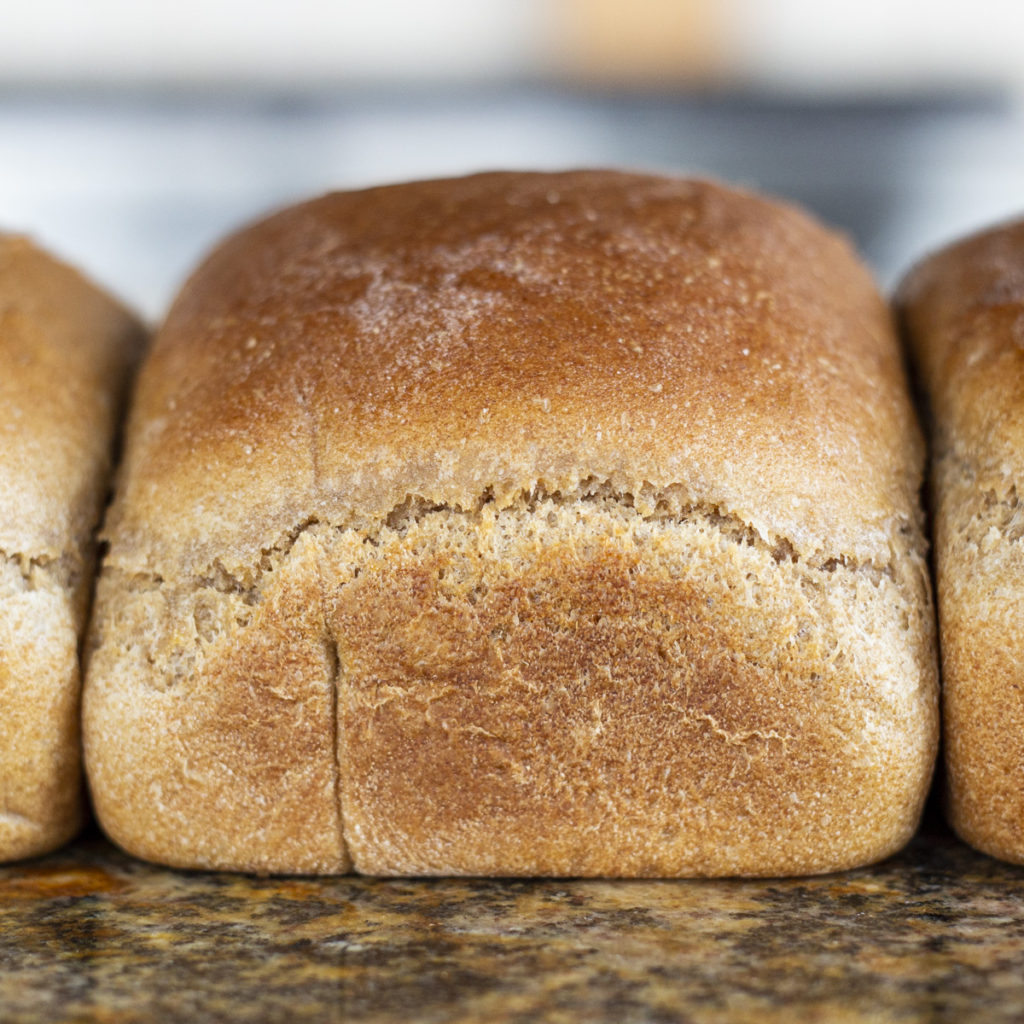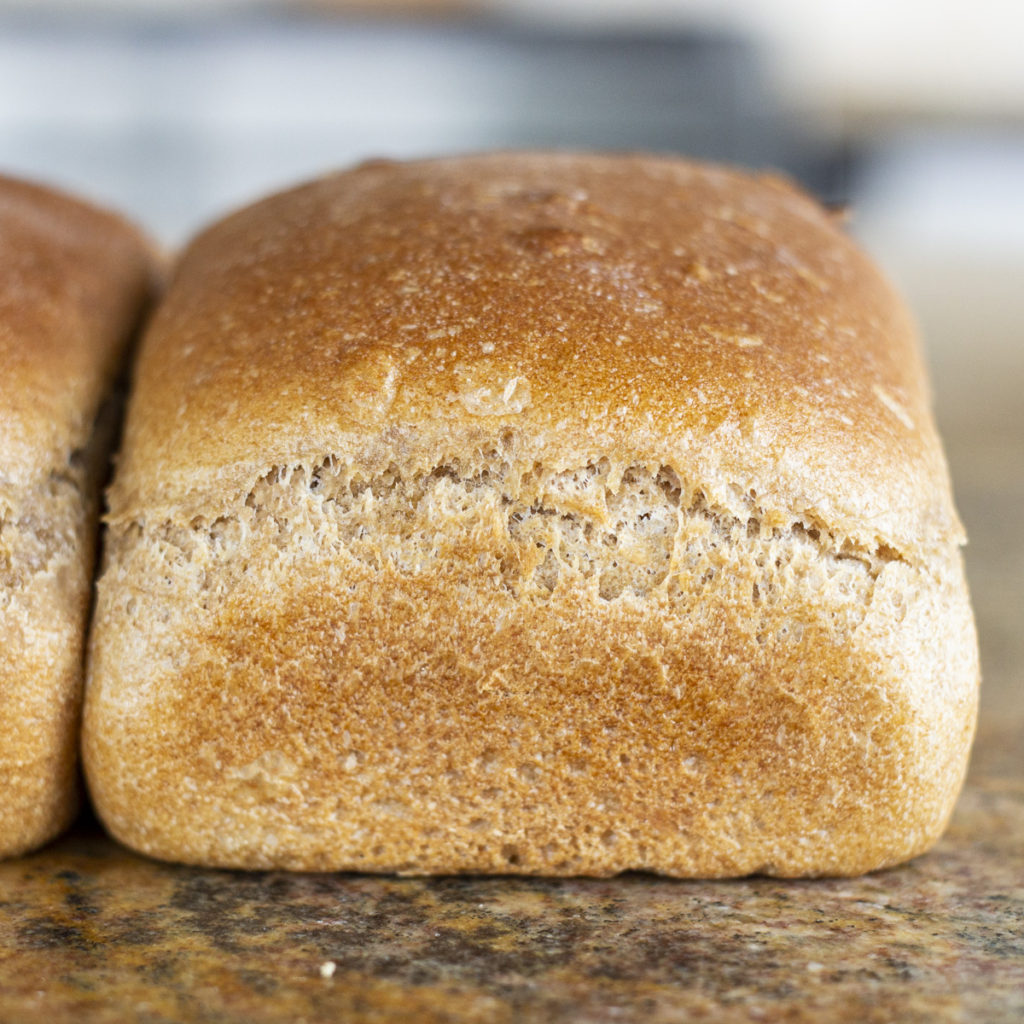A short note before we dive into our testing: it is important to note that when following a bread recipe, you should follow the manufacturer’s instructions for kneading bread rather than what the recipe states. For KitchenAid mixers, this means using the dough hook and kneading at speed 2 for 4 minutes. If additional kneading is required, let your mixer rest for 15 minutes and repeat the process. For Bosch and Nutrimill mixers, use the dough hooks, set them to the slowest speed, and mix for 6-8 minutes. For this section of testing, we followed the manufacturer’s recommendations.
To determine the best mixer for sandwich bread, we wanted a sticky, thick dough that made several loaves of bread to truly test the capacity of our mixers. We used an old family recipe— Four mixers, 15 cups of flour, and 16 loaves of bread later, we had our test results and were pleasantly surprised by them.
Whole wheat bread and a whole lotta testing


KitchenAid 5 qt Tilt Head ⭐️ ⭐️ ⭐️
The biggest issue we had with the 5-quart KitchenAid was the dough creeping up over the dough hook. The large quantity made it really messy to mix all the ingredients and knead the dough. When we poured the dough onto the counter, we noticed some flour that stuck to the bottom of the bowl. We didn’t smell any heating of the motor and didn’t notice any struggling.


KitchenAid 6 qt Professional ⭐️ ⭐️ ⭐️ ⭐️ ⭐️
We still had issues with the dough coming over the dough hook, but it mixed all the ingredients together well. The wider bowl worked better for the large quantity of ingredients. There wasn’t any unincorporated flour and the handle on the bowl made it easy to dump the dough onto the countertop.


Nutrimill Artiste ⭐️ ⭐️ ⭐️ ⭐️ ⭐️
The Nutrimill’s larger bowl also held the ingredients well. Near the end of our kneading time, we noticed the dough starting to crawl up the center column of the bowl. The base began to feel warm and we could smell a burnt rubber smell that most likely came from the belt. The bowl made it difficult to pour the dough out onto the counter. The Nutrimill’s bowl scraper was better than Bosch’s because it’s made of plastic and stays closer to the bowl’s column. This mixer did a great job, but it did struggle a bit with kneading such a large quantity of dough.


Bosch Universal ⭐️ ⭐️ ⭐️ ⭐️ ⭐️
The Bosch’s large bowl handled the quantity of ingredients with ease. However, some dough began to creep up and cover the center column. This happened after we scraped it and we aren’t sure if it would have happened had we not scraped it. We made sure to use the column scraper attachment, but it didn’t work as well as the Nutrimill’s. The mixer seemed powerful and handled the amount of dough with ease. The lowest speed of the Bosch is the fastest compared to the slower speeds on the other mixers. We wish it had a slower stir setting for incorporating ingredients at the beginning and for kneading. We also wish it had a handle on the bowl to make pouring out dough easier. Overall, this mixer combined the ingredients quickly and had no issues with kneading the dough.
So… Which is the best mixer for bread?
Overall, each of the mixers handled the amount of dough fairly well. The Bosch was powerful and mixed the bread together quickly. The 6 qt KitchenAid held dough better than the 5 qt, but they both performed well. The Nutrimill held its own and could hold the quantity, but the motor wasn’t as strong compared to the Bosch. After we baked the loaves, we really couldn’t tell much of a difference between the four of them. The Bosch loaves had a slightly higher rise and open crumb, but we believe that had more to do with the rising time than it did the mixer. Because of the ease of mixing the dough and the slightly better rise, we thought the Bosch deserved the title of “best mixer for sandwich bread” for this test. With this soft bread dough, all of the mixers performed well.




